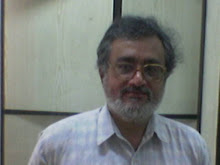10 Aug 2008, 0148 hrs IST,
SWAPAN DASGUPTA
http://timesofindia.indiatimes.com/Opinion/Columnists/Identity_crisis/articleshow/3346990.cms
There is a facet of the turmoil in Jammu and Kashmir that is both puzzling and revealing: why did it take the government so long to begin talking to the protestors in Jammu? Consider the facts. On July 31, Prime Minister Manmohan Singh invited the leader of Opposition L K Advani and Arun Jaitley for a discussion on internal security. After an anodyne exchange on terrorism, the prime minister requested the BJP to use its good offices to ensure that the 'blockade' of the highway to the Kashmir Valley is lifted. He had information that the separatists would use the disruption to press for accessing the Muzaffarabad road and demanding transit through Pakistan. This would create fresh complications and add an international dimension to the problem. The prime minister's fears were warranted since this is precisely what the Hurriyat Conference leaders have begun demanding. Yet, for a full week, until the all-party meeting on August 6, the government sat back and watched the agitation in Jammu escalate steadily. At the all-party meeting too, the government's limited objective was to secure a unanimous resolution asking for the Jammu agitation to be called off. It was only after the BJP flatly refused that the government grudgingly agreed to begin a dialogue with the Sangharsh Samity spearheading the agitation. Democracy is by definition quite tiresome. It involves constant engagement with saints, dreamers, rogues and normal people. In Jammu and Kashmir, successive governments have kept the door open for dialogue with even those who have questioned the state's inclusion in the Indian Union and supped with the ISI. The prime minister even travelled to Srinagar for a Round Table Conference which included the Hurriyat Conference - it is a separate matter the separatists didn't attend. So, why did the government hesitate to talk to those who have been on the streets for over a month, defying curfew, braving hardships and marching with the Indian tricolour? If the separatists are "our people", are the citizens of Jammu non-citizens? The government's insensitivity arose from a mindset that has influenced official thinking, shaped the million-dollar conflict-resolution industry and permeated into the editorial classes. It was centred on the assumption that the Kashmir Valley was all that mattered in Jammu and Kashmir; Jammu and Ladakh were the loose ends that could be conveniently papered over. No one gave a damn when Ladakh protested against the demographic transformation and the threat to its identity and Jammu's long-standing complaints of discriminatory treatment were brushed aside with sneering condescension. All that mattered was the so-called 'hurt Kashmiri psyche' and Kashmiri 'alienation'. These labels of victimhood also became the cover for the most heinous political crime of independent India: the ethnic cleansing of Kashmiri Hindus from the Valley. Today, this shameful expulsion has become such a footnote that Hurriyat leaders can brazenly proclaim their 'secular' credentials on TV talk shows, while the voices of Pandit protest are rubbished with the disdain reserved for Praveen Togadia. The protests in Jammu are only partially about the 40 acres of land given to the Amarnath Yatra Shrine Board and then taken away after the PDP and the separatists raised the bogey of a demographic invasion and an assault on Kashmiri identity. Imagine the outcry if a Haj Terminal is peremptorily denotified on 'cultural' grounds? Having had their feelings trampled upon for so long, the people of Jammu are demanding the right to live with self-respect and dignity in a state where only separatist blackmail seem to matter. The protests are an assertion of political empowerment and a plea to the rest of India to give nationalism a place in Jammu and Kashmir. Simultaneously, it is a fitting rebuff to the mindset that deems Omar Abdullah's eloquent insensitivity in the Lok Sabha an iconic assertion of cosmopolitan modernity.

No comments:
Post a Comment